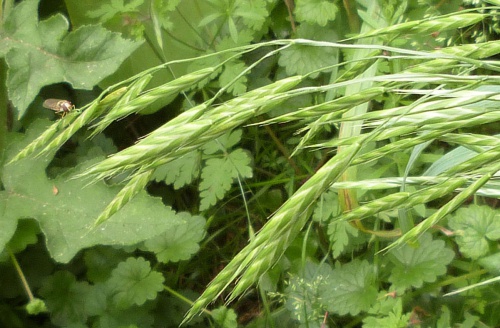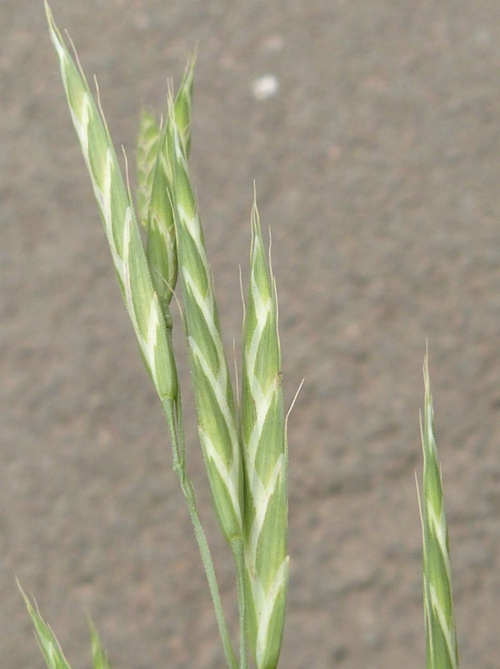California Brome - Ceratochloa carinata
Ceratochloa carinata can grow to a metre or more in height and has numerous broad leaves. The inflorescence is large, and likely to droop at fruiting under the weight of the fruits. Spikelets vary from 1 to 4 per branch and are distinctly flattened, 15 to 60 mm long. Lemmas are hairy on the back with a terminal awn up to 6 mm long.
There are many similar species of Brome (Bromus and Anisantha)
Lemmas keeled on back, with awn arising near tip
Either obtain confirmation from a County Recorder before submitting a record, or submit detailed images showing key features. We recommend that you take and retain a specimen; the County Recorder may wish to see this for confirmation.
Found on road verges, towpaths, beside paths, on field-borders, waste ground and by rivers.
Flowering around June in britain.
A vigorous perennial herb, which is often short-lived or annual in Britain.
It was first recorded in Britain as an escape from the Royal Botanic Gardens, Kew, in about 1919, but it did not begin to spread until 1945. There were still only a very few records in the 1962 BSBI Atlas. Since then it has spread well, particularly on lighter soils.
Rare in Leicestershire and Rutland.
In the most recent VC55 checklist (Jeeves, 2011) is is listed as Alien (Casual) - Rare; the first VC55 record was from Saxby in 2003
Leicestershire & Rutland Map
Enter a town or village to see local records
MAP KEY:
Yellow squares = NBN records (all known data)
Coloured circles = NatureSpot records: 2020+ | 2015-2019 | pre-2015
UK Map
Species profile
- Common names
- California Brome
- Species group:
- Grasses, Rushes & Sedges
- Kingdom:
- Plantae
- Order:
- Poales
- Family:
- Poaceae
- Records on NatureSpot:
- 1
- First record:
- 09/06/2018 (Calow, Graham)
- Last record:
- 09/06/2018 (Calow, Graham)
Total records by month
% of records within its species group
10km squares with records
The latest images and records displayed below include those awaiting verification checks so we cannot guarantee that every identification is correct. Once accepted, the record displays a green tick.
In the Latest Records section, click on the header to sort A-Z, and again to sort Z-A. Use the header boxes to filter the list.




